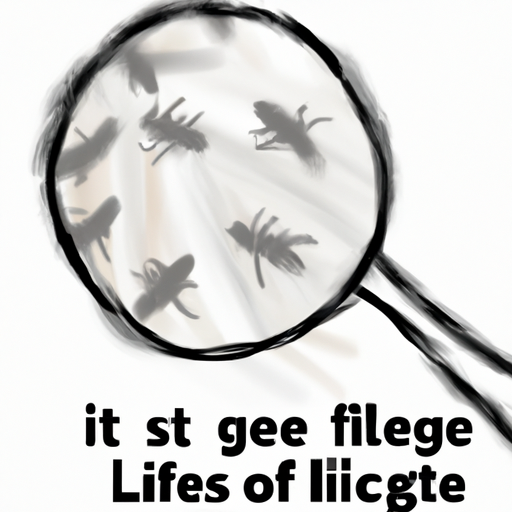As a loving and caring dog owner, you might be worried about lice infestation on your fur baby. It’s crucial to understand that lice are not just a problem for humans; they can also affect our canine companions. This article will guide you through what lice look like on dogs, the signs of lice infestation, treatment options, and preventive measures, with a handy FAQ section for quick references.
What Are Dog Lice and What Do They Look Like?
Dog lice are tiny, wingless, six-legged insects that are specific to dogs. They’re not the same as human lice, so you don’t have to worry about catching lice from your dog.
Lice on dogs are usually about 1-2mm long and have a flat and oval body shape. Their color can range from white to tan or dark grey. Lice have hook-like claws that they use to attach to the dog’s hair.
With the naked eye, you might find it challenging to spot lice as they blend in with the dog’s fur. However, you may be able to see them if you part your dog’s hair and look closely, especially around the base of the tail, head, and neck.
Signs and Symptoms of Lice Infestation in Dogs
When it comes to lice, it’s not just about what they look like, but also the signs they leave behind. Here are some symptoms to look out for:
- Excessive scratching, biting, or licking: Lice can cause intense itchiness, leading your dog to scratch or bite at its skin relentlessly.
- Hair loss: Constant scratching can lead to patches of hair loss.
- Red, irritated skin: Lice infestation can cause inflammation and redness of the skin.
- Dull coat: Your dog’s coat may lose its shine and look dull or dirty.
- Restlessness or discomfort: If your dog is infested with lice, it may seem generally uncomfortable and unable to relax.
Diagnosis and Treatment of Dog Lice
If you suspect your dog has lice, it’s essential to get a professional diagnosis. Your vet will take a close look at your dog’s skin and fur, often using a fine-toothed comb to collect samples.
Once lice infestation is confirmed, treatment involves two main steps:
-
Killing the existing lice: This can be achieved using special shampoos, sprays, or topical treatments. Your vet may also recommend oral medications.
-
Preventing new infestations: This involves cleaning and disinfecting your dog’s environment, including bedding, toys, and grooming tools.
| Treatment Type | Examples |
|---|---|
| Shampoos | Pyrethrin-based shampoos |
| Sprays | Fipronil sprays |
| Topical Treatments | Imidacloprid and moxidectin |
| Oral Medications | Spinosad |
Preventive Measures Against Dog Lice
Prevention is always better than cure. Here are some steps you can take to protect your dog from lice:
- Regular grooming: Brushing your dog’s coat regularly can help detect lice early.
- Keep your dog’s environment clean: Regularly clean and disinfect your dog’s bedding, toys, and grooming tools.
- Avoid sharing grooming tools: Sharing can lead to cross-infestation.
- Regular vet check-ups: Regular check-ups can help detect lice infestation early and prevent it from spreading.
Frequently Asked Questions (FAQs)
Can humans get lice from dogs?
No, dog lice are species-specific and cannot infest humans.
How can I prevent my dog from getting lice?
Regular grooming, keeping your dog’s environment clean, avoiding sharing grooming tools, and regular vet check-ups can help prevent lice infestation.
What do lice eggs look like on dogs?
Lice eggs, also known as nits, are tiny white or yellow specks that attach to the dog’s hair near the skin.
Can I treat dog lice at home?
While some over-the-counter treatments are available, it’s best to consult with your vet before starting any treatment.
How long does it take to get rid of lice on dogs?
With proper treatment, lice infestation can be controlled within a few weeks, but it’s important to continue the treatment as directed by your vet to ensure all lice and nits are eliminated.
Caring for a dog is a rewarding experience, and understanding potential health issues like lice infestation is a part of that journey. By knowing what lice look like and how to treat and prevent them, you can ensure your furry friend stays happy and healthy.



